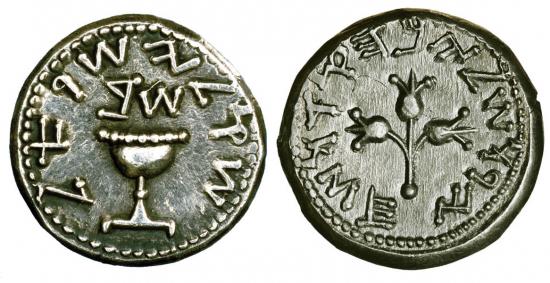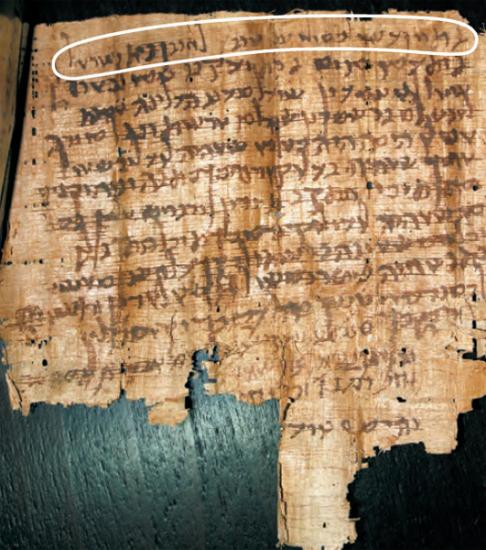Source - http://www.biblicalarchaeology.org/daily/ancient-cultures/daily-life-and-practice/how-ancient-jews-dated-years/

During the First Jewish Revolt against Rome (66–70 C.E.), which ended with the destruction of the Temple, Jews minted their own coins dated to the first, second, third, fourth and, more rarely, even fifth year of the revolt. Zev Radovan/www.biblelandpictures.com
During the First Jewish Revolt against Rome (66–70 C.E.), which ended with the destruction of the Temple, Jews minted their own coins dated to the first, second, third, fourth and, more rarely, even fifth year of the revolt. In other words, dating began with the beginning of the revolt. Many of the coins also bore legends like “Jerusalem the Holy” or “Freedom of Zion.”
The Romans crushed the Jewish revolt in 70 C.E. (except for the holdouts at Masada), but the Jews managed to revolt again a little more than 60 years later. This revolt, the so-called Bar-Kokhba Revolt (132–135 C.E.),a lasted only two-and-a-half years. And the coins from this revolt are much rarer. As in the first revolt, however, coins are dated beginning with the start of the revolt. An example is a coin inscribed, “Year 1 of the Redemption of Israel,” or another inscribed, “Year 2 of the Freedom of Israel.” Rarely, a coin bears the legend “Year 3 of the Redemption of Israel.”
During the Byzantine period (fourth–seventh centuries), a different dating system developed, beginning not with the start of a revolt, but rather the disasters that ended them. For example, synagogue inscriptions and tombstones are sometimes dated as so many years after the destruction of the Temple that effectively ended the first revolt.
At just about the time the second revolt ended with the defeat of the Jews, the Romans made Jerusalem into a Roman colony and renamed the city Aelia Capitolina.b Jews were not even allowed to live there. The bitter taste of defeat grew even stronger.

The newly discovered document is dated to “Year 4 of the Destruction of the House of Israel.” Courtesy Yad Ben-Zvi Institute.
Now a document has been discovered with a date based on the end of the Bar-Kokhba Revolt in 135 C.E. The newly discovered document is dated to “Year 4 of the Destruction of the House of Israel.” This is the first time this dating formula has been attested.1
The document was discovered and looted, as is so often the case, by Bedouin in the Judean Desert, near where the Dead Sea Scrolls were found. It seems there are still more documents to be found in the Judean Desert. How this one was acquired by the scholarly community, we are not told, probably because in the past when a leading scholar purchased such a fragment from the Bedouin, the Israel Antiquities Authority (IAA) had the scholar arrested!c All the IAA will say this time is that the document was “confiscated.”
The document, dated paleographically to the second century C.E., is remarkably well preserved and well written. The scribe records his name at the end of the document: “Joseph, son of Jac[ob the scribe].” The document was given by a certain widow named Miriam to her husband’s brother Absalom. The document attests that she had received from her deceased husband all that he had promised in their marriage contract (ketuba) and that she had no other claim to the family property of Absalom. The language is a mixture of Aramaic and Hebrew. The document is dated four years after the end of the Bar-Kokhba Revolt.
Notes
1. First published (in Hebrew) by Hanan Eshel, Esther Eshel and Ada Yardeni in Cathedra 132 (2009), pp. 5–24.
a. See Werner Eck, “Hadrian’s Hard-Won Victory,” BAR 33:05
b. See Hanan Eshel, “Aelia Capitolina: Jerusalem No More,” BAR 23:06.
c. See Update: Finds or Fakes? “Major Scholars Protest Eshel Arrest,” BAR 32:02.